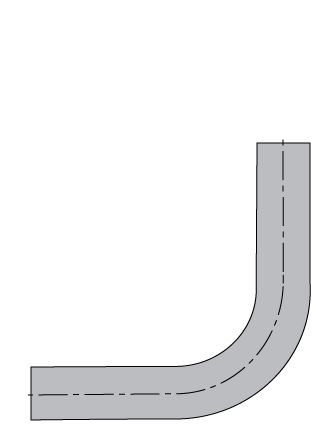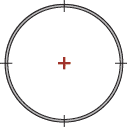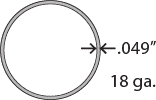

| Tube OD |
Centerline Radius
|
|
2.00"
|
2.25"
|
2.38"
|
2.50"
|
2.75"
|
3.00"
|
3.50"
|
4.00"
|
4.500"
|
5.00"
|
6.00"
|
7.00"
|
8.00"
|
9.00"
|
10.00"
|
|
| 1.250" |
312525
|
||||||||||||||
| 1.380" |
313825
|
||||||||||||||
| 1.500" |
315020
|
315025
|
315030
|
315040
|
|||||||||||
| 1.625" |
316320
|
316325
|
316330
|
316340
|
|||||||||||
| 1.750" |
317520
|
317525
|
317530
|
317540
|
317550
|
317560
|
|||||||||
| 1.875" |
318820
|
318825
|
318830
|
318840
|
318850
|
318860
|
|||||||||
| 2.000" |
320020
|
320025
|
320030
|
320035
|
320040
|
320050
|
320060
|
||||||||
| 2.125" |
321325
|
321330
|
321335
|
321340
|
321350
|
321360
|
|||||||||
| 2.250" |
322522
|
322530
|
322535
|
322540
|
322560
|
||||||||||
| 2.375" |
323834
|
323830
|
323835
|
323840
|
323860
|
||||||||||
| 2.500" |
325025
|
325030
|
325040
|
325050
|
325060
|
||||||||||
| 2.625" |
326340
|
||||||||||||||
| 2.750" |
327527
|
327540
|
|||||||||||||
| 3.000" |
330030
|
330040
|
330060
|
||||||||||||
| 3.500" |
335035
|
335070
|
|||||||||||||
| 4.000" |
340040
|
340080
|
|||||||||||||
| 4.500" |
345045
|
345090
|
|||||||||||||
| 5.000" |
350050
|
350010
|
|||||||||||||
Nesting mandrel bends is as simple as adding or subtracting the tube O.D. from the CLR (centerline radius). A 2.00" O.D. U bend with a 3.0" CLR. will nest inside a 2.0" O.D. 90 degree bend with a 5.0" CLR. The illustration shows the measurement from the inner radius to the outer radius.
That measurement must be equal to or greater than the tube size you are working with.
O.D. (outside diameter) is the standard means of measuring tubing.
I.D. (inside diameter) is typically used to describe pipe sizes.
To find the I.D. of tubing double the wall thickness and subtract it from the O.D.
2.00"O.D. - (.065" + .065") = 1.870" I.D.
As you can see from the equation above 1-7/8" tubing (1.875) will not slide into 2" 16 gauge (.065) tube.
The centerline is the absolute center of the tube.

1008 (Mild) Carbon steel
CREW - Cold Rolled Electronically Welded
AKDQ - Aluminum Killed Drawing Quality
304 stainless steel is the most common stainless alloy tube used in aftermarket exhaust.
To insure quality and consistency we use only A-269 spec. 304 fully annealed, seam welded tubing from Rath-Gibson mills.
304 / 304L is a non-magnetic stainless from the Austenitic family of alloyed steel containing 18% Chromium & 8% Nickel.
It does almost everything you ever wanted your stainless to do and for a relatively low price. It has high strength, ductility, excellent weldability, resistants to corrosion, and polishes to a mirror finish.
304 stainless does have some limitations, it is not well suited for extreme temperatures such as those produced by turbo charged engines. Although 321 stainless is more expensive, the resistance to fatigue at high temperatures may be a better choice in some applications, saving you money in the long run.
321 Stainless Bends are stocked in U's and 1D 90's only.
Due to the high cost of material J's, 45's and wide radius 90's are only available by special order.
321 stainless steel has a small percentage of titanium added as a stabilizer, giving it better corrosion resistance, vibrational stability and a higher resistance to heat fatigue than 304 stainless.
Lighter gauge 321 tubing such as 18ga. (.049) and 20ga. (.035) is commonly used for aircraft exhaust
16 gauge (.065) 321 tubing is recommended for turbo-charged applications.
We stock tubing in three wall thickness or gauges.

16 gauge (.065")
18 gauge (.049")
20 gauge (.035")
Mild steel tubing is available in:
16 gauge (.065") and 18 gauge (.049").
Stainless steel tubing is available in:
16 gauge (.065") and 18 gauge (.049").
Some 304 & 321 stainless bends are also available in 20 gauge (.035")
Centerline Radius (CLR) bending is an industry standard.
Leg lengths vary based on the bend radius and tube size.
90 - bends with a CLR up to 4" have
6" legs (+/-.250" tolerance)
90 - bends with a CLR greater than 4” have 8” legs (+/-.250" tolerance)
Call for leg lengths on 4.0" to 5.0" mild and 3.5" to 5.0" stainless.
Tangent is the point at which the straight section (leg) of the tubing meets the bent section.
Overall Width is a easy way to visualize the bend you need to order.
The prefix 3 denotes a 90 degree bend in our part numbering system.
Use the buttons above the P/N example to see how we build a part number.
Use the buttons on the left to learn more about the specs and terminology.
90 & 45 degree bends are best used in applications were the whole bend and a portion of the straight on each end are utilized.
If straight tube on each end is unnecessary, U & J bends can be cut to create two 45's and a 90.
In most cases a 90 is the only way to get the tightest radius. We offer 90's and 45's in a 1D bend for most sizes of tubing.
(example = 2.00" tubing bent on a 2.0" CLR)
